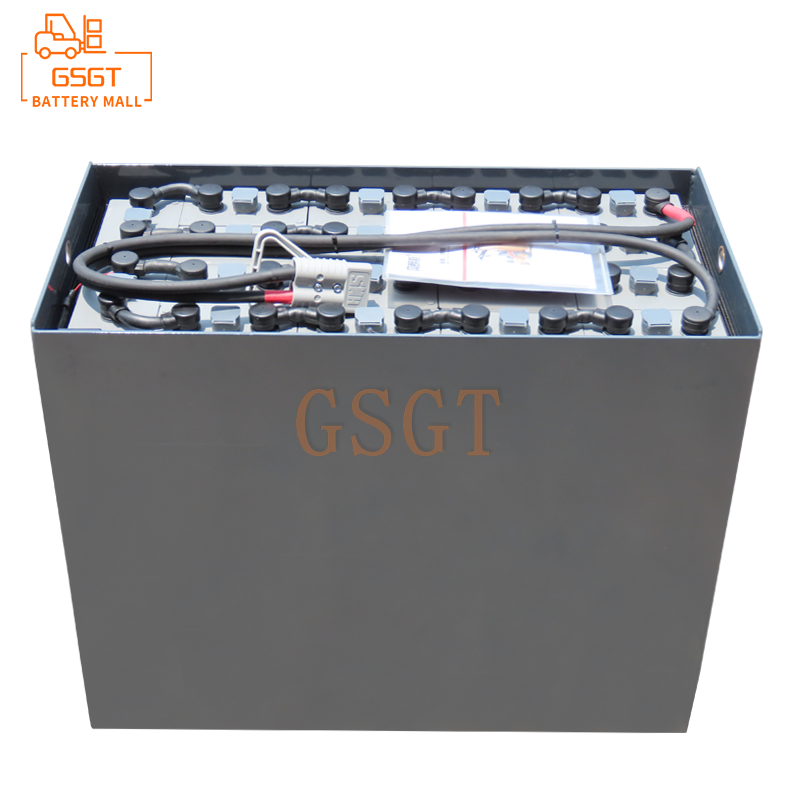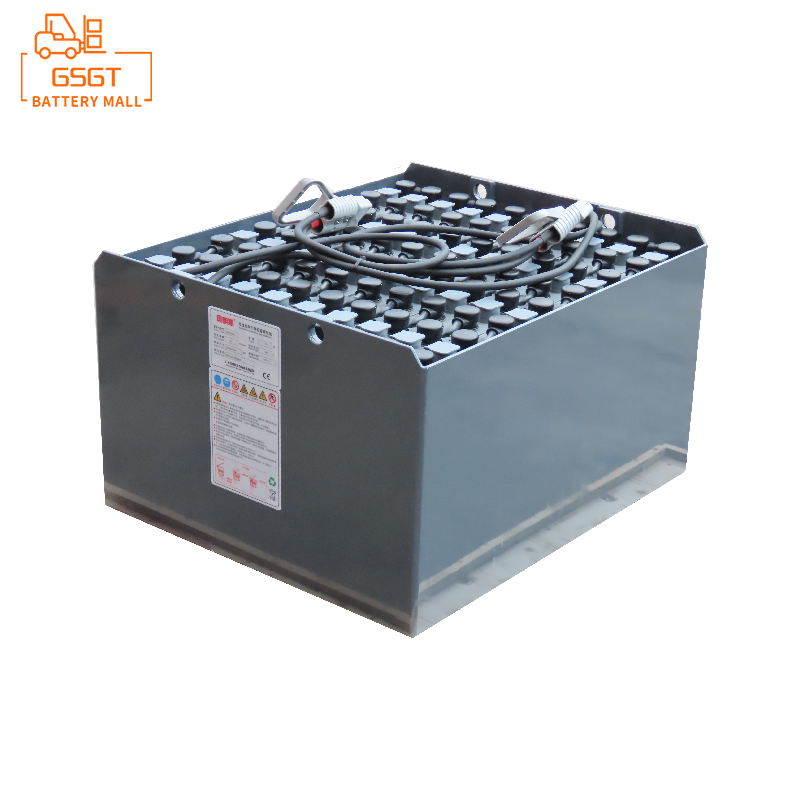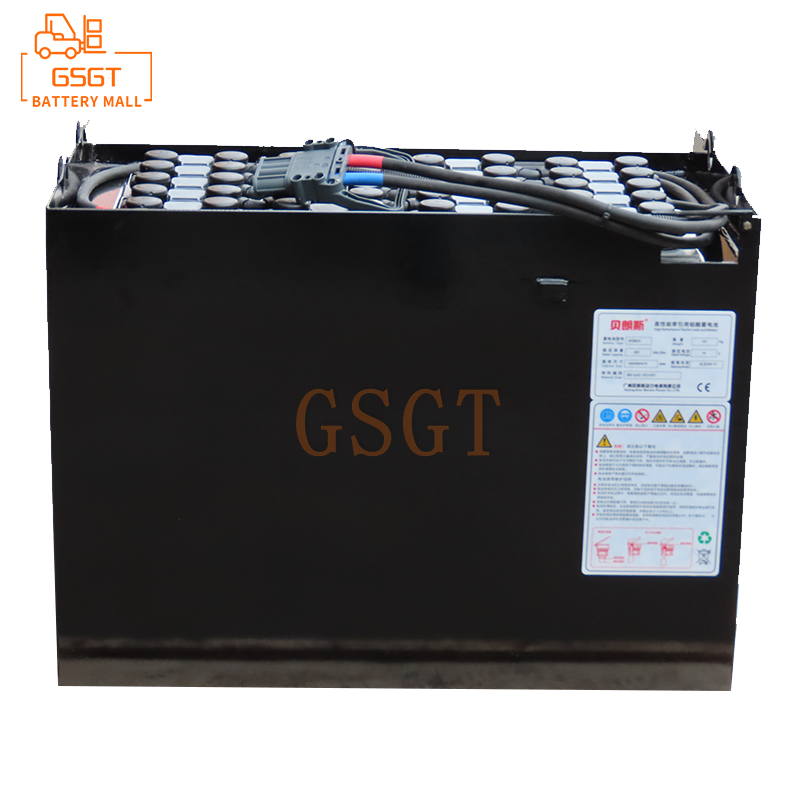Time:2025-07-18 09:55:22
Browse:618
In the daily operation of forklifts, a sudden voltage drop of lead-acid batteries is a common and thorny problem. This not only affects the normal working efficiency of forklifts, but may also lead to operation interruptions, causing unnecessary losses to the enterprise. A thorough understanding of the causes of voltage sags and mastering the corresponding analysis methods are of vital importance for timely problem-solving and ensuring the stable operation of forklifts.
1. Internal factors of the battery cause a sudden voltage drop
(1) Plate vulcanization
Plate sulfation is one of the common reasons for the sudden voltage drop of forklift lead-acid batteries. When a storage battery is in a state of undercharging for a long time or is not charged in time after discharging, a layer of white lead sulfate crystals will gradually form on the plates. These crystals are hard in texture and difficult to dissolve during normal charging. They will cover the surface of the plates, reducing the contact area between the plates and the electrolyte.
As the degree of sulfation intensifies, the battery's power storage capacity will drop significantly, and the voltage will experience a sudden drop during discharge. For instance, a battery that could have enabled a forklift to operate normally for 8 hours when fully charged might fail to function after 2 to 3 hours due to insufficient voltage after severe sulfation of its plates.
(2) Shedding of the active material on the plates
The shedding of the active material on the plates can also cause a sudden drop in voltage. During the operation of forklifts, if overcharging and discharging operations are frequently carried out or the battery is subjected to severe vibration, the active substances on the plates are prone to fall off. The active material is a key component involved in electrochemical reactions, and its shedding will rapidly reduce the battery's capacity.
When a large amount of active material falls off and deposits at the bottom of the battery, it may also cause a short circuit of the plates, further intensifying the drop in voltage. In this case, not only does the battery experience a significant voltage drop, but it may also experience a rapid voltage rise during charging but a quick voltage drop during discharging.
(3) Electrolyte issues
The concentration and level of the electrolyte have a significant impact on the voltage of the battery. If the concentration of the electrolyte is too high, it will accelerate the corrosion of the plates, shorten the service life of the battery, and also cause the voltage to drop rapidly during the discharge process. If the concentration of the electrolyte is too low, it will lead to an increase in the internal resistance of the battery, a weakened discharge capacity, and also cause a sudden voltage drop.
In addition, if the electrolyte level is too low, the upper part of the plates will be exposed to the air, causing oxidation of the plates and affecting the normal progress of electrochemical reactions, which in turn leads to a drop in voltage. In daily use, if distilled water is not replenished in time, the problem of the electrolyte level being too low is likely to occur.
2. External factors cause a sudden voltage drop
(1) Charging system failure
Charging system failure is an important external factor causing a sudden drop in battery voltage. Problems such as a damaged charger and improper setting of charging parameters can all prevent the battery from being fully and effectively charged. For instance, if the output voltage of the charger is too low to charge the battery to its rated voltage, the battery will remain in an undercharged state for a long time. As a result, a sudden voltage drop will occur during discharge.
In addition, poor contact in the charging line can also affect the charging effect, leading to insufficient battery charging and subsequently causing voltage issues. During the charging process, if you notice that the charging time is significantly prolonged or the battery temperature rises abnormally, it is very likely that there is a malfunction in the charging system.
(2) Issues with line connection
Unstable line connections and poor contact are also common causes of voltage sags. During the long-term use of forklifts, the connection lines between the battery and the forklift may become loose or oxidized due to vibration, wear and other reasons. These problems will increase the resistance of the circuit, hindering the current during transmission and causing the output voltage of the battery to drop.
Especially during high-current discharge, the impact of poor line contact is more obvious, and the voltage will suddenly drop. When inspecting the connection of the circuit, pay special attention to checking the terminal posts, plugs and other parts to see if there is any loosening, oxidation, corrosion or other conditions.
3. Q&A Session
(1) Q: When the voltage of a forklift's lead-acid battery drops sharply, how can one quickly determine whether it is a problem with the battery itself or an external factor?
Answer: You can make a judgment according to the following steps. First, observe the appearance of the battery to see if there are any bulges, leaks, or white crystals of sulfation on the plates. If these conditions occur, it is very likely that there is a problem with the battery itself. Secondly, check the charging system. Connect the charger to another normal battery to see if it can charge normally. If not, it indicates that there is a fault with the charger, which is due to an external factor. If it can be charged normally, then connect the charger to the faulty battery and observe the charging situation. If the charging effect is not good, it may be a problem with the battery itself.
Then, check the wiring connections. Examine each part between the battery and the forklift, such as the terminals, plugs, and wiring, one by one to see if there is any loosening, oxidation, or corrosion. Use a multimeter to measure the resistance of the wiring. If the resistance is too high, it indicates that there is a problem with the wiring connection, which is an external factor. If all the above external factors have been ruled out, it can basically be determined that the problem lies with the battery itself.
(2) Q: How can we prevent a sudden drop in the voltage of lead-acid batteries in forklifts during daily use?
Answer: Daily prevention can be approached from multiple aspects. In terms of battery usage, it is necessary to avoid overcharging and discharging. When the forklift's battery level is low, stop the operation immediately and charge it. During charging, ensure sufficient time to prevent power failure in the middle. At the same time, the liquid level and concentration of the electrolyte should be checked regularly. Distilled water should be replenished in time when the liquid level is lower than the standard, and adjustments should be made when the concentration is not suitable.
In terms of the maintenance of the charging system, it is necessary to regularly inspect and maintain the charger to ensure its normal operation and correct charging parameter Settings. For charging circuits, it is necessary to regularly check the connection status. Any problems such as loosening or oxidation should be dealt with promptly.
In addition, during the operation of forklifts, it is necessary to avoid severe vibration and collision to reduce the shedding of active substances on the plates. Regular equalization charging of the battery helps prevent sulfation of the plates and maintain the battery's performance.
(3) Q: After a sudden voltage drop, what emergency measures can be taken to keep the forklift working for a period of time?
Answer: When the voltage drops sharply, if the situation is urgent, some emergency measures can be taken. First, check the circuit connections. Re-tighten the loose terminals and plugs, remove the oxide layer, ensure good circuit connections, reduce resistance, and this may cause the voltage to rise somewhat.
Secondly, if the voltage drop is caused by a low electrolyte level, when distilled water is available, it can be appropriately replenished. After replenishment, let it stand for a period of time before use, which can alleviate the voltage problem to a certain extent.
In addition, you can try to reduce the load on the forklift, avoid sudden acceleration, sudden braking and other operations, lower the battery discharge current, and thereby extend the working time of the forklift. However, it should be noted that these emergency measures are only stopgap solutions. A comprehensive inspection and repair of the battery must be carried out afterwards to fundamentally solve the problem.
4. Summary
The sudden voltage drop of forklift lead-acid batteries is caused by the combined effect of multiple factors, including internal issues such as sulfation of the battery plates, shedding of active materials, and problems with the electrolyte, as well as external factors like charging system failures and connection issues of the lines. In daily use, it is necessary to strengthen the maintenance and care of the battery, regularly check the battery status and related equipment, and promptly identify and solve problems.
By understanding the causes and analysis methods of voltage sags, as well as mastering the corresponding preventive and emergency measures, the impact of voltage sags can be effectively reduced, ensuring the normal operation of forklifts, improving operational efficiency, and lowering the operating costs of enterprises.

$3160

$2440

$8340

$1790

MESSAGE
Professional And Efficient
Security
Affordable Price
Professional Services